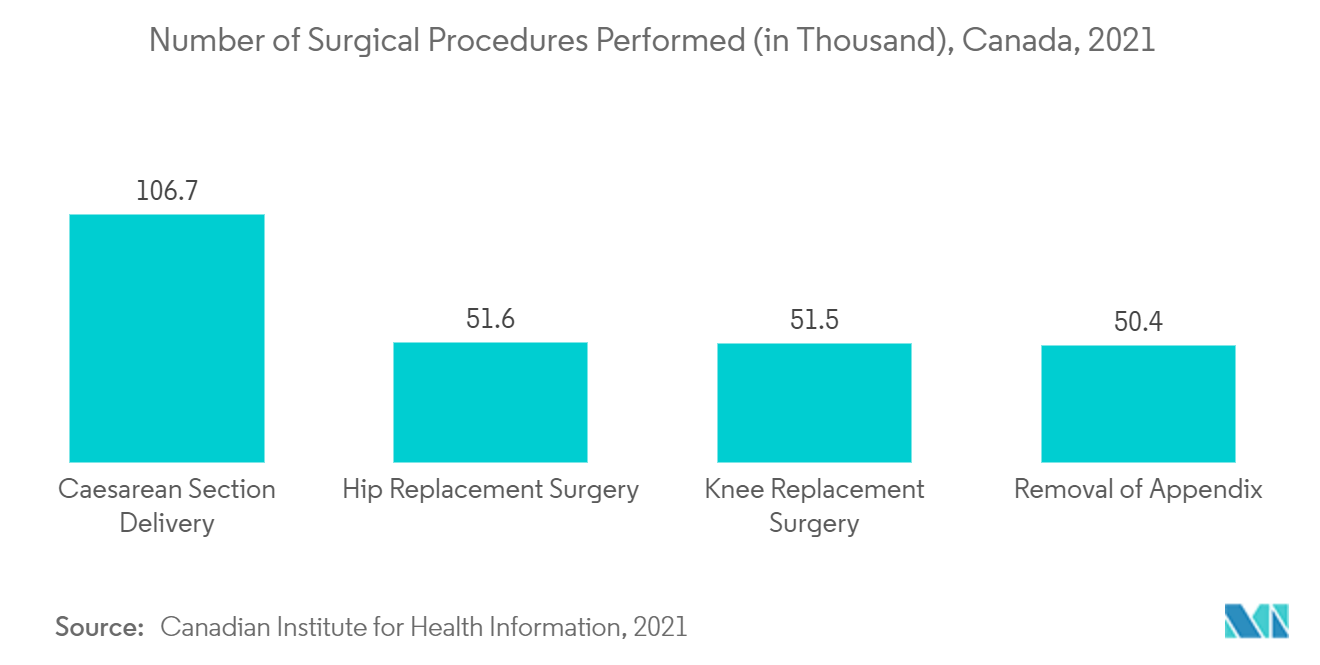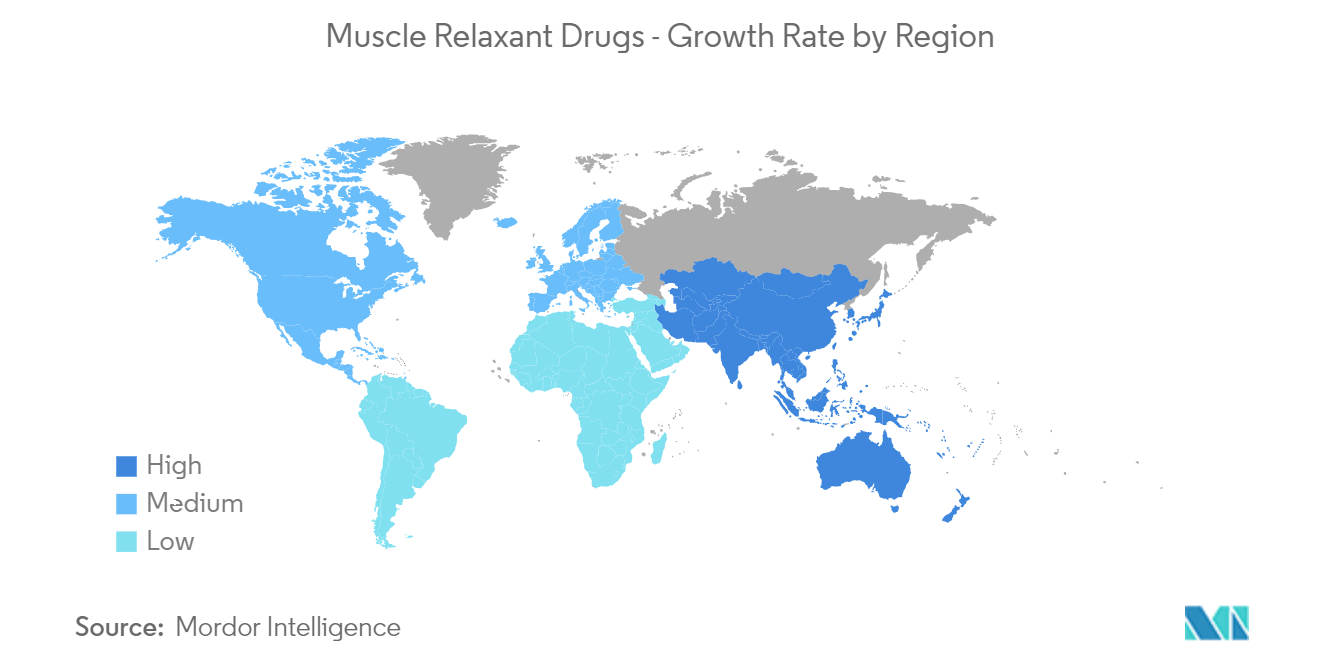Market Trends of Muscle Relaxant Drugs Industry
Neuromuscular Blocking Agents Segment is Expected to Witness Significant Growth Over the Forecast Period.
Neuromuscular blocking agents are potent muscle relaxants typically used only during surgery to prevent muscle movement. They are structurally related to acetylcholine, the primary neurotransmitter in the body, and they cause muscle relaxation by binding to acetylcholine receptors postsynaptically, preventing acetylcholine from binding. This blocks neuromuscular transmission and causes paralysis of the muscle. Neuromuscular blocking agents have been widely used as muscle relaxants as they can expedite rapid endotracheal intubation, facilitate surgical procedures, and aid in mechanical ventilation by relaxing skeletal muscles.
Neuromuscular blocking agents are widely used in surgical procedures. The high number of surgeries is constantly increasing the demand for neuromuscular blocking agents, thereby driving the growth of this segment. For instance, in 2021 Canadian Institute for Health Information (CIHI) reported that during 2020-2021, 106,728 cesarean section delivery, 51,660 hip replacement surgery, and 51,599 knee replacement surgeries were performed in Canada. Thus, such a high number of surgical procedures are increasing the consumption of neuromuscular blocking agents, as these are usually administered during anesthesia to improve surgical conditions, thereby driving the growth of this segment.
Cisatracurium, succinylcholine, doxacurium, and rocuronium are a few examples of neuromuscular blocking agents. Also, product launches for neuromuscular blocking agents are expected to contribute to the segment's growth. For instance, in February 2022, Ritedose launched two unit dose syringe products, rocuronium bromide injection 50 mg/5ml and Rocuronium bromide injection 100 mg/ml. Rocuronium injection is used with general anesthesia medicines for rapid sequence intubation and routine tracheal intubation. This medicine is also used to help relax the muscles during surgery or mechanical ventilation. Thus, the use of neuromuscular reagents in surgical operations and the new product launches are expected to drive the growth of the studied segment during the forecast period.

North America Expected to Witness a Significant Growth Over the Forecast Period.
The growth of the North American muscle relaxant drugs market can be primarily attributed to the increasing prevalence of musculoskeletal disorders, regulatory authorities' approval, and several market players' presence. For instance, an article published in the journal Frontiers in Physiology in July 2022 reported that musculoskeletal disorders are one of the most commonly reported medical conditions and are the leading cause of disability in the United States, as they account for more than half of chronic conditions in people over age 50. Thus, growing musculoskeletal disorders are increasing the demand for muscle relaxants and thus driving the growth of the studied market in the region.
Also, the increasing geriatric population in North American countries is driving the demand for muscle relaxants products. This population is more prone to diseases like back pain, muscle tightness, and muscle spasms, including those related to spine injuries. This disorder increases the demand for muscle relaxants and contributes to the market's growth in the region. For instance, in July 2022, the United Nations report stated that the 10.6 million population in Mexico aged 65 and above is expected to increase to 19.7 million by 2040. The geriatric population is expected to increase by 85.8% of its current population by 2040 in Mexico. The source also reported 7.3 million people in Canada aged above 65 years in 2022, and expected to increase to 10.16 million by 2040. Thus, the increasing geriatric population is increasing the demand for muscle relaxants and contributing to the market's growth in the region.
Furthermore, the increased funding for developing muscle relaxant drugs is also expected to contribute to the market's growth. For instance, in November 2021, Delpor, Inc received a National Institute of Health (NIH) grant award of USD 2.5 million for the further advancements of the company's tizanidine implant product (DLP-208) for moderate-severe spasticity. Thus the increasing geriatric population, rising musculoskeletal disorders, and increasing funding are expected to drive market growth during the forecast period in this region.


